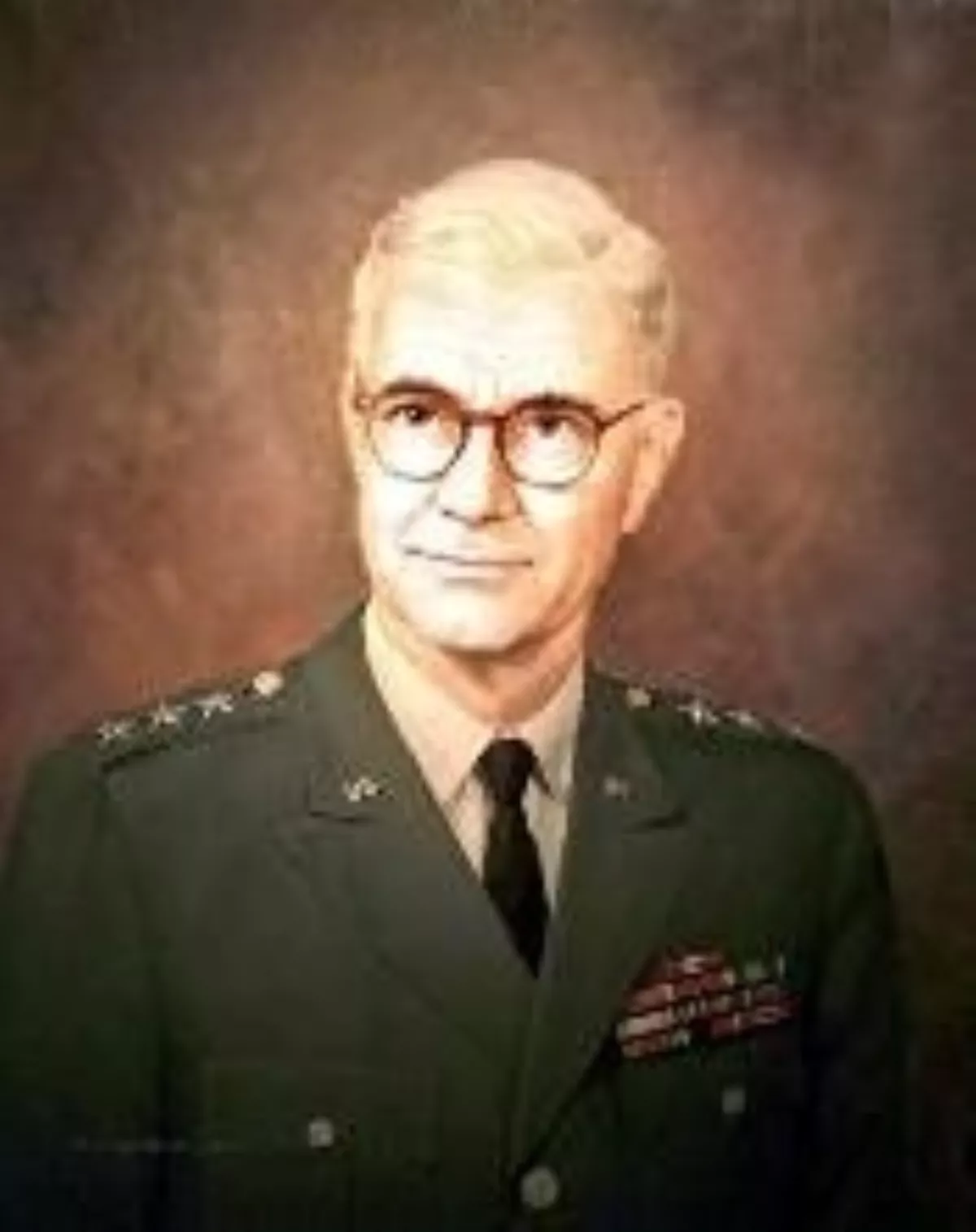 1.
1. Alfred Dodd Starbird was an American modern pentathlete, lieutenant general, and authority on nuclear weaponry.

 1.
1. Alfred Dodd Starbird was an American modern pentathlete, lieutenant general, and authority on nuclear weaponry.
Alfred Starbird was a member of the United States modern pentathlon team at the 1936 Summer Olympics, finishing seventh overall in a field of 42.
Alfred Starbird was an observer at landings at Oran and Normandy.
From 1955 to 1961, Alfred Starbird was Director of Military Applications of the Atomic Energy Commission.
Alfred Starbird commanded Joint Task Force 8 in the conduct the Operation Dominic series of nuclear tests in 1962, was director of the Defense Communications Agency from 1962 to 1967, and director of the Sentinel program from 1967 to 1971.
Alfred Starbird's family called him by his middle name, Dodd.
On July 1,1929, Alfred Starbird entered the United States Military Academy at West Point, New York.
Alfred Starbird was captain of the cross country running team and played basketball.
Alfred Starbird graduated USMA class of 1933 as the fifth in his class of 347 on June 13,1933.
Alfred Starbird was posted to the 5th Engineer Regiment at Camp Humphreys, Virginia, until February 1,1935, and then to the 13th Engineer Regiment at Fort Belvoir until June 15,1935.
Alfred Starbird, who was promoted to first lieutenant on June 12,1936, was detached to join the United States modern pentathlon team at the 1936 Summer Olympics.
Alfred Starbird finished equal seventh in the cross country running, equal eighth in the fencing and show jumping, 20th in the swimming and 23rd in the shooting, and finished seventh overall in a field of 42.
Alfred Starbird married Evelyn Wallington at Fort Myer, Virginia, where her father was stationed, in June 1939.
Alfred Starbird was promoted to lieutenant colonel in the Army of the United States on November 28,1942, and captain in the Corps of Engineers on June 13,1943.
Alfred Starbird represented the Operations Division at the Quebec Conference in August 1943 as an expert on the European Theater of Operations.
On January 1,1945, Alfred Starbird assumed command of the 1135th Engineer Combat Group.
Alfred Starbird was awarded the Legion of Merit, a second Bronze Star Medal and the Order of the Patriotic War Second Class from the Union of Soviet Socialist Republics.
Alfred Starbird returned to the Operations Division on June 1,1945.
On July 17,1946, Alfred Starbird was posted to Hawaii as the deputy chief of staff of United States Army Pacific.
Alfred Starbird was then seconded to Joint Task Force 7, a special force formed for the Operation Sandstone nuclear tests at Eniwetok Atoll in the Pacific in 1948.
Alfred Starbird was promoted to major in the Corps of Engineers on July 15,1948.
Alfred Starbird joined the Supreme Headquarters Allied Powers Europe in Paris when it was formed in 1951.
Alfred Starbird then returned to Washington, DC, for a two-year tour in the Office of the Chief of Engineers.
Alfred Starbird advised the Atomic Energy Commission on nuclear disarmament issues, and a proposed moratorium on nuclear testing, and warned the Commission about the amount of fallout that could be expected from the Operation Hardtack I nuclear tests, and recommended the use of underground nuclear weapons testing.
In 1961, Alfred Starbird returned to duty with the Corps of Engineers as chief engineer of the North Pacific Division, supervising large military and civil construction projects in Portland, Oregon.
Alfred Starbird served as director of the Defense Communications Agency from 1962 to 1967.
Alfred Starbird was given until September 1967 to build the McNamara Line, an electronic surveillance system intended to detect infiltration of South Vietnam by NVA forces from North Vietnam and Laos.
The project was given the highest national priority, and Alfred Starbird was sent to South Vietnam to confer with General William Westmoreland.
Alfred Starbird received a second oak leaf cluster to his Distinguished Service Medal for this work.
Alfred Starbird was awarded a third oak leaf cluster to his Distinguished Service Medal, and an oak leaf cluster to his Legion of Merit.
In 1971, Alfred Starbird became director of the newly created Office of Test and Evaluation in the Department of Defense.
Alfred Starbird died of cancer at Walter Reed Hospital on July 28,1983.